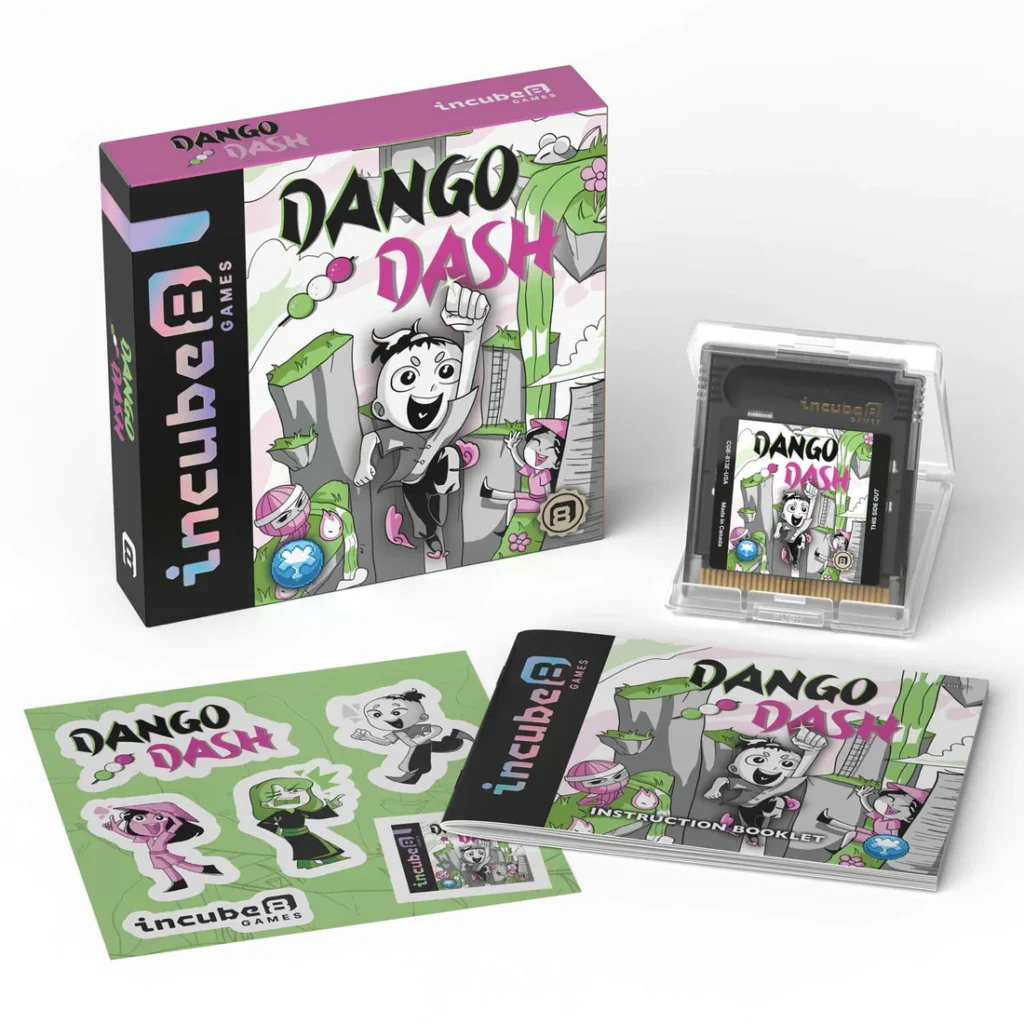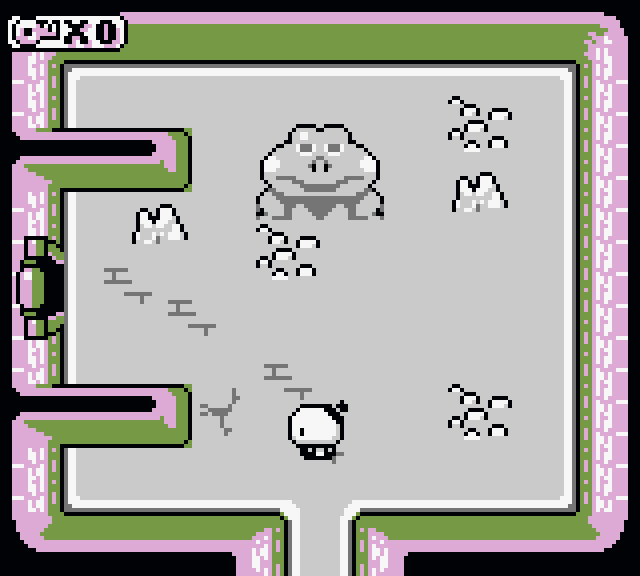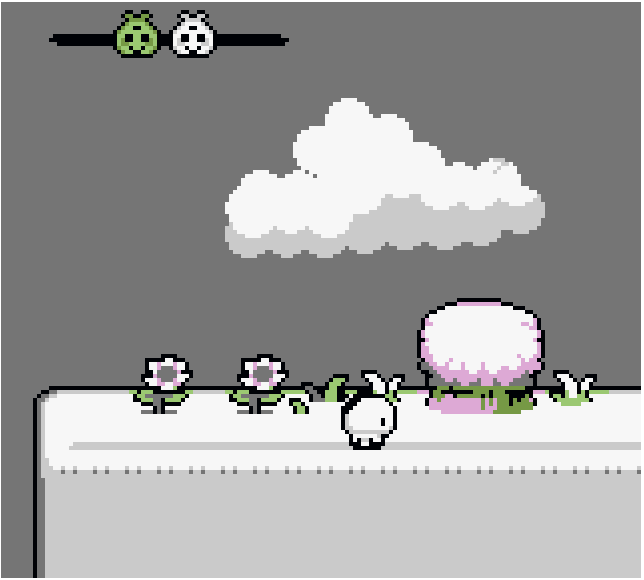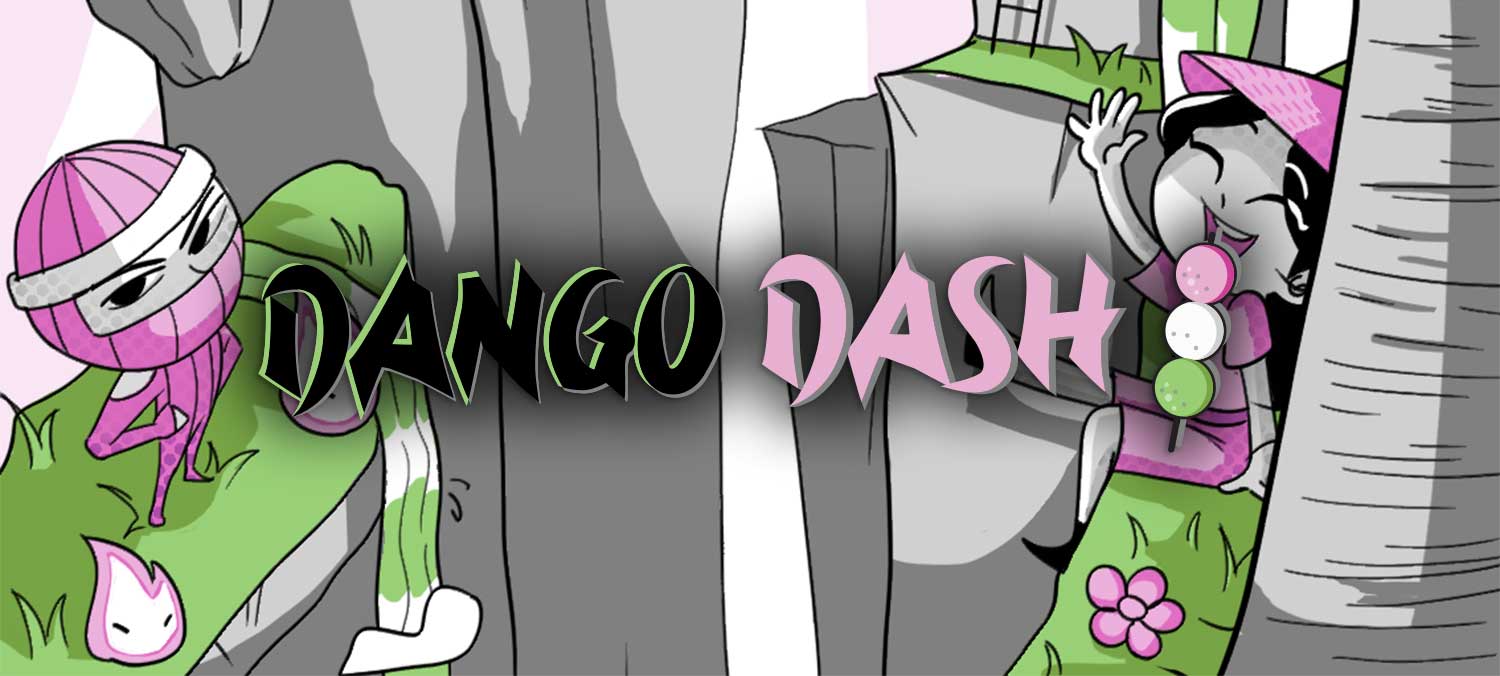This Dango Dash has been played and reviewed with the help of emulation, via a ROM. The game is published by Incube8 Games and can be purchased on the publisher’s website as a ROM, a cartridge only edition for $ 39.99 or complete edition for $59.99. As with all Incube8 Games releases, the physical version of the game comes with an authentic, high-quality, full-color box, manual, cartridge, and a sticker sheet.

Once upon a time…
Dango Dash tells the story of Dango, a boy who lives with his mother in a village that floats between the clouds on one of the many floating islands. Once, a calamity destroyed the world and mysteriously caused bits and pieces of its surface to float in the sky.
While living peacefully in his village, our soon-to-be hero is confronted with the appearance of rifts near his village. Although all the villagers are intrigued by the newly appearing rifts, everyone goes on with their normal lives. For Dango, this means practically doing nothing until his mother gives him the proverbial kick in the butt and forces him to work as a delivery boy for his noodle bar-owning uncle, Kyo.


While on a delivery, Dango runs into an adventurer and a mysterious member of the Hanami Ninja Clan. With Dango’s curiosity triggered, he embarks on an adventure of epic proportions.
In order to solve the mysteries of the rifts, Dango needs to gain access to them. To do so, our protagonist must help villagers with various chores and tasks to earn enough ‘friendship’ power to enter the rifts. This can involve fetching a device or object or racing against a villager through a stage. All chores must be completed in a linear order and cannot be done randomly. Once a chore is finished, a question mark appears above another villager, indicating that a stage can be completed by talking to that particular villager.
Zelda-Mario hybrid
Dango Dash is primarily a platformer, and the village serves as a hub world to enter individual platform stages. Houses can be entered, and the game then switches to an overhead “SNES Zelda” view. Although this may give off the vibe of an adventure RPG, it doesn’t do much with it gameplay-wise. There are no real items in the overworld, and no skills or buffs are carried over between platforming stages. Occasionally, dungeons can be entered from within a stage, which transforms the game again into the overhead view we know from other interior locales in this game. These are fun and puzzling sub-stages that the game sparingly throws at you.
The game mixes horizontal and vertical platforming paths to create varied gameplay within each level. Enemies are strategically placed on the platforms to hinder your progress and prevent you from easily navigating up and down the stages. In general, exercising patience will assist in clearing the path or creating space to find an advantageous angle of attack. Particularly in the latter part of the game, the difficulty significantly increases, offering a decent challenge that may require you to reconsider your tactics and approach to avoid repetitive deaths.
GB or GBC?
Although I like the world design in general, I can’t help but think that the visual presentation is a bit bland. The color scheme is white, gray, magenta and green, without any variation while progressing through the game. This is supposed to be a Game Boy Color game, but ironically, there is a severe lack of color. I’ve questioned myself repeatedly whether Dango Dash was a Game Boy Color game or a Game Boy game in colorized ‘Game Boy Color mode’. All information we received with the press kit states that it is a Game Boy Color game, so I guess we have to go with that.


I absolutely love the 8-bit music and samples in Dango Dash. They are quite funky and catchy. The music nicely switches tone and tempo when entering dialogues and interior sections. Then, when you venture into the platforming stages, it picks up tempo to align with the on-screen action.
Conclusion
In the beginning, the game kind of tricks you into thinking it’s an action-adventure game, reminiscent of the GB Zelda games, only to reveal itself as a nice and cohesive puzzle-oriented platformer. The visuals are appealing, the levels are enjoyable, and they become increasingly challenging in the latter half of the game. Small details, such as the main character’s walk animations, add an extra layer of polish to the game. The only real complaint is that the stages tend to have a similar appearance. This can be somewhat excused considering the limitations of the Gameboy hardware. While it may not innovate the genre, the game successfully presents a straightforward platformer wrapped in a cohesive narrative-driven package.
If your interested in physical homebrew releases check out our Retro section.
Dango Dash is a fun, challenging, ambitious, and cohesive platformer with a delightful village overworld and an intriguing cast of characters. It surpasses the expectations of an average platformer by providing an engaging story and meaningful character interactions. However, it would have been even better if the game had a less linear progression and if the visuals had more variation.


